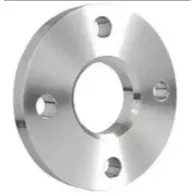-
Cangzhou Yulong Steel Co., Ltd.
-
Phone:
+86 13303177267 -
Email:
admin@ylsteelfittings.com
- English
- Arabic
- Italian
- Spanish
- Portuguese
- German
- kazakh
- Persian
- Greek
- French
- Russian
- Polish
- Thai
- Indonesian
- Vietnamese
- Zulu
- Korean
- Uzbek
- Hindi
- Serbian
- Malay
- Ukrainian
- Gujarati
- Haitian Creole
- hausa
- hawaiian
- Hebrew
- Miao
- Hungarian
- Icelandic
- igbo
- irish
- Japanese
- Javanese
- Kannada
- Khmer
- Rwandese
- Afrikaans
- Albanian
- Amharic
- Armenian
- Azerbaijani
- Basque
- Belarusian
- Bengali
- Bosnian
- Bulgarian
- Catalan
- Cebuano
- China
- China (Taiwan)
- Corsican
- Croatian
- Czech
- Danish
- Esperanto
- Estonian
- Finnish
- Frisian
- Galician
- Georgian
- Kurdish
- Kyrgyz
- Lao
- Latin
- Latvian
- Lithuanian
- Luxembourgish
- Macedonian
- Malgashi
- Malayalam
- Maltese
- Maori
- Marathi
- Mongolian
- Myanmar
- Nepali
- Norwegian
- Norwegian
- Occitan
- Pashto
- Dutch
- Punjabi
- Romanian
- Samoan
- Scottish Gaelic
- Sesotho
- Shona
- Sindhi
- Sinhala
- Slovak
- Slovenian
- Somali
- Sundanese
- Swahili
- Swedish
- Tagalog
- Tajik
- Tamil
- Tatar
- Telugu
- Turkish
- Turkmen
- Urdu
- Uighur
- Welsh
- Bantu
- Yiddish
- Yoruba

Nov . 02, 2024 10:39 Back to list
carbon steel buttweld fittings
Understanding Carbon Steel Buttweld Fittings A Comprehensive Guide
Carbon steel buttweld fittings are essential components widely used in various industries, including oil and gas, power generation, and construction. These fittings are designed to connect two pipes or tubes, allowing for smooth and efficient fluid flow in piping systems. This article delves into the characteristics, benefits, and applications of carbon steel buttweld fittings, providing insights into their importance in engineering and construction projects.
Carbon steel is an alloy that consists primarily of iron and a small percentage of carbon, typically under 2%. This composition gives carbon steel its desirable properties, such as strength, durability, and resistance to wear. When it comes to buttweld fittings, this type of steel is particularly favored due to its ability to withstand high pressures and temperatures, making it suitable for a range of applications.
Types of Carbon Steel Buttweld Fittings
There are several types of carbon steel buttweld fittings, each serving a specific function in piping systems. The most common types include
1. Elbows Used to change the direction of the piping, elbows can come in various angles, typically 90 or 45 degrees.
2. Reducers These fittings reduce the diameter of the piping, allowing for a seamless transition between pipes of different sizes.
3. Tees T-shaped fittings that connect three pipes, allowing for branching off of the main pipeline.
4. Caps Used to close the end of a pipe, caps help prevent the escape of fluids and maintain system integrity.
carbon steel buttweld fittings

Benefits of Carbon Steel Buttweld Fittings
1. Strength and Durability Carbon steel fittings are known for their robustness, able to withstand high levels of stress and impact. This durability is crucial in applications where the fittings are exposed to harsh conditions.
2. Weldability As the name suggests, buttweld fittings are designed for welding. The butt weld process creates a strong, integral bond between fittings and pipes, minimizing leaks and potential failures.
3. Cost-Effectiveness Carbon steel is generally more affordable than other materials, such as stainless steel. This makes carbon steel buttweld fittings an economical choice for large-scale projects.
4. Versatility These fittings are suitable for various applications, including water, gas, and steam piping systems. Their adaptability makes them a preferred choice across multiple industries.
5. Resistance to High Temperatures and Pressures Carbon steel can withstand extreme conditions, making these fittings ideal for high-demand environments, such as refineries and power plants.
Applications of Carbon Steel Buttweld Fittings
The applications of carbon steel buttweld fittings are extensive. They are used in petrochemical facilities, oil and gas pipelines, water treatment plants, and HVAC systems. Their strength and resistance to corrosion make them ideal for transporting fluids and gases under high pressure.
In conclusion, carbon steel buttweld fittings play a critical role in the efficiency and safety of piping systems across various industries. Understanding their types, benefits, and applications can help engineers and construction professionals make informed decisions when designing and implementing piping solutions. As industries continue to evolve, the demand for reliable and durable fittings like these will undoubtedly remain strong, ensuring their place in modern engineering.
Latest news
-
ANSI 150P SS304 SO FLANGE
NewsFeb.14,2025
-
ASTM A333GR6 STEEL PIPE
NewsJan.20,2025
-
ANSI B16.5 WELDING NECK FLANGE
NewsJan.15,2026
-
ANSI B16.5 SLIP-ON FLANGE
NewsApr.19,2024
-
SABS 1123 FLANGE
NewsJan.15,2025
-
DIN86044 PLATE FLANGE
NewsApr.19,2024
-
DIN2527 BLIND FLANGE
NewsApr.12,2024
-
JIS B2311 Butt-Welding Fittings LR/SR 45°/90° /180°Seamless/Weld
NewsApr.23,2024











